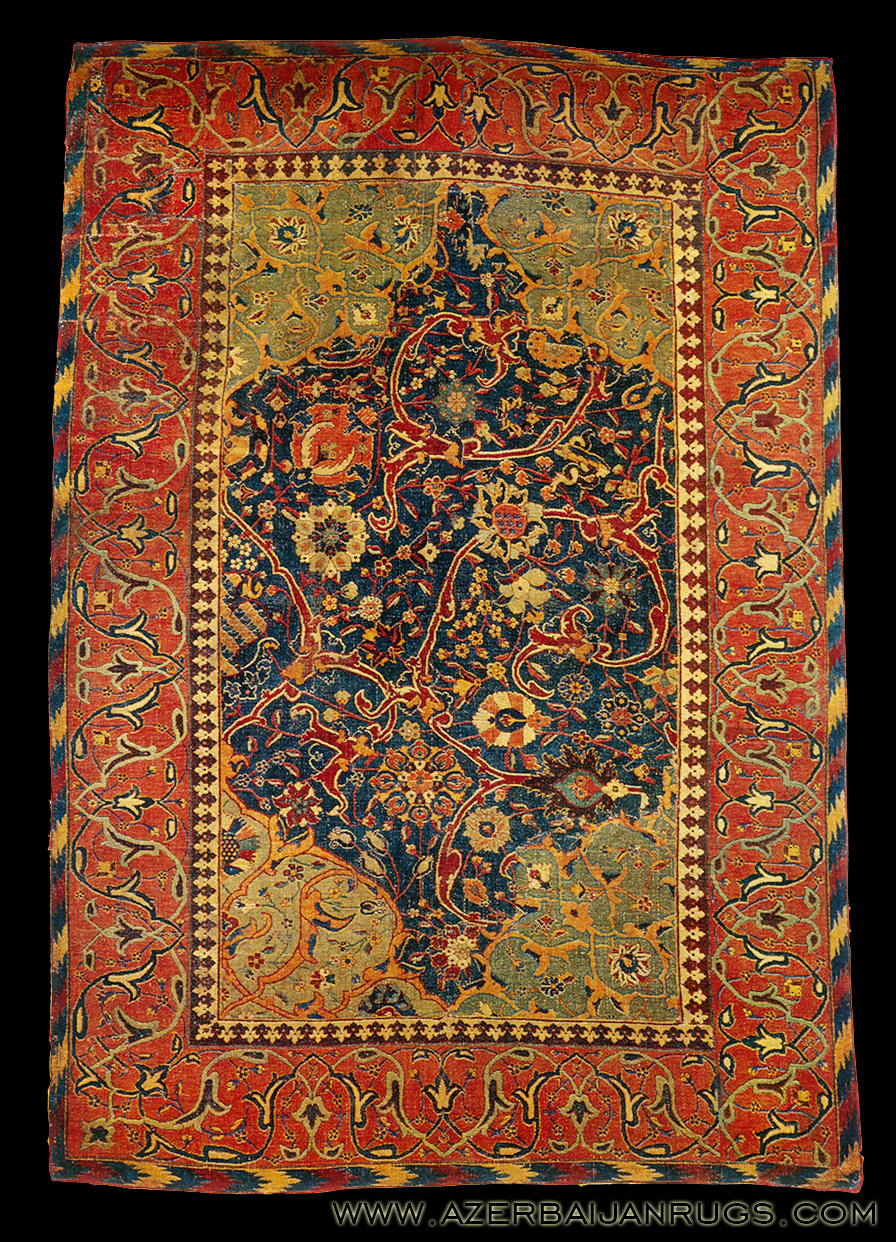Date:17th century
Geography:Iran, probably Kirman
Culture:Islamic
Medium:Cotton (warp), wool (weft and pile); asymmetrically knotted pile
Dimensions:Rug: H. 54 1/8 in. (137.5 cm) W. 53 5/8 in. (136.2 cm)
Credit Line:Gift of Joseph V. McMullan, 1970
Accession
Number:1970.302.5 (Not on view)
This fragment of a carpet bears a
variety of flowers on winding stems over a blue ground. Its structure,
which is composed of two planes of warp threads, indicates that it was
probably produced in the city of Kirman in southeastern Iran. Carpets from
this city display a wide range of patterns but are alike in construction.
Exported to India during the reign of Emperor Akbar (r. 1556–1605), Kirman
carpets were known to be among the finest produced in Iran during this
period.
Provenance
Joseph V. McMullan, New York (by 1960–70;
gifted to MMA)
References
McMullan, Joseph V., and Ernst J.
Grube. Islamic Carpets. New York: Near Eastern Art Research Center, 1965.
no. 21, pp. 90-91, ill. pl. 21 (color).
Welch, Anthony, ed. Shah
'Abbas and the Arts of Isfahan. New York: Asia House Gallery, 1973. no.
27, pp. 48, 68, p. 48 (b/w). |



